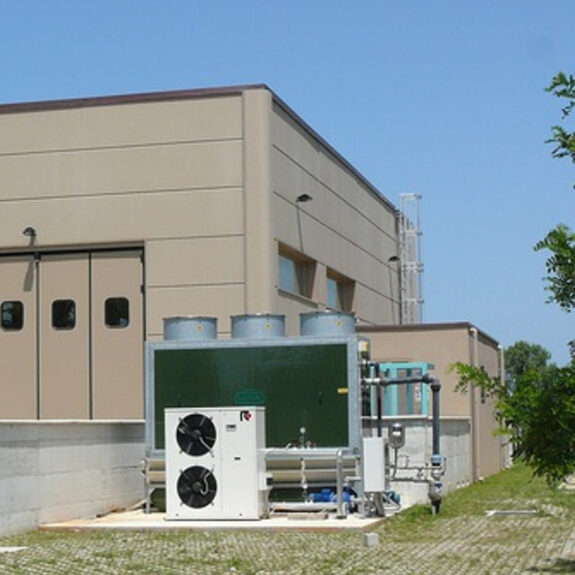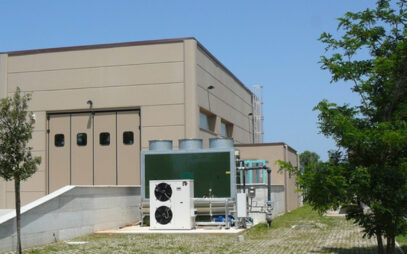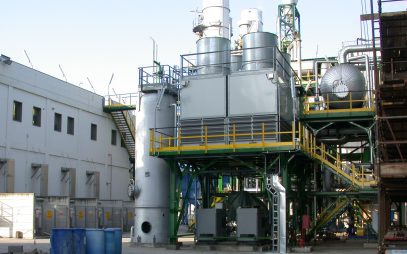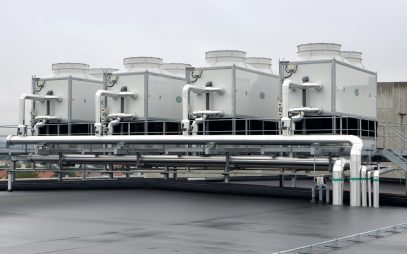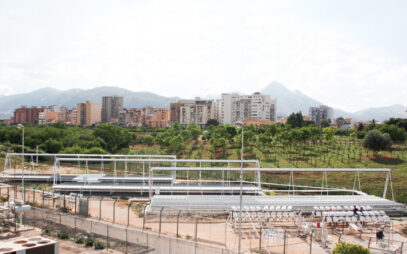1. Installation context
The Rotor Dynamics Lab, attached to the University of Pisa’s Turbomachinery Mechanics Research Center, was to be expanded and modernized as part of the Athens Project (Advanced Technologies for ENergy Efficiency): an initiative co-funded by the Tuscany Region and developed by UniPisa’s Department of Civil and Industrial Engineering. The aim of the Project: to stimulate industrial research and technology transfer in Tuscany, also involving SMEs.
The Laboratory’s test benches (of about 1 MW total operating power) had one need in particular: namely, to preserve the quality of the cooling fluid, which should not come into contact with air. For this, the ideal solution was the closed circuit: in this situation, the fluid remains confined to the metal coils and is cooled by a secondary amount of cooler water.
2. Proposed solution
The closed circuit cooling tower MCC E3-09 SILENT, installed in conjunction with the motor test benches, specifically supports the ability to maintain the process fluid unchanged.
As in other civilian contexts, it was necessary to limit the generated noise. For this reason, the “Silent” version of the evaporative tower incorporates some features: electric motors with a low number of revolutions, directly coupled to fans with aerodynamic profile blades, and sound-absorbing casing.
The MCC tower installed dissipates a power of 700 kW. The incoming fluid temperature is 50°C, the outgoing temperature is 35°C, while the installed electrical power is 3.3 kW for the motors and 1.5 kW for the water recirculation pump.
3. The key to success
The technicians at the University of Pisa particularly appreciated some specific technical features of the MITA closed circuit tower:
- The fiberglass structure, which is corrosion-resistant.
- The fully openable walls to allow easy, fast, and complete access to the internal parts.
- Additionally, the side walls and the water collection basin were made with a special coloration, according to the specific RAL requested by the customer.
Ask for Information From Info Impianti
Read the article from the magazine (Italian text) 